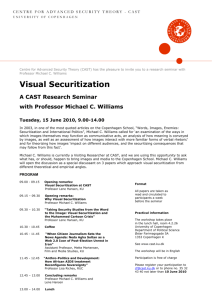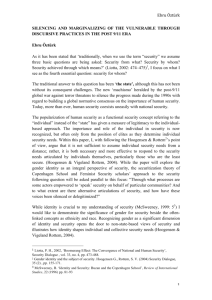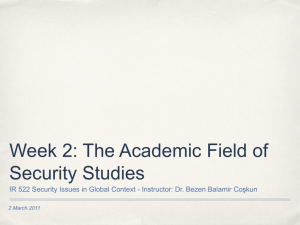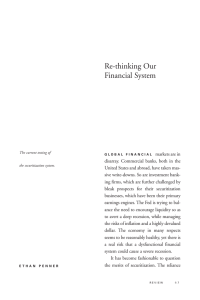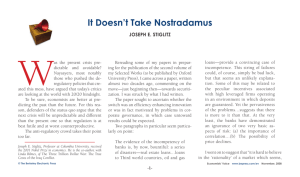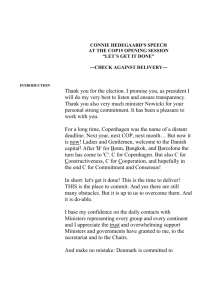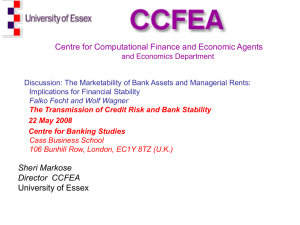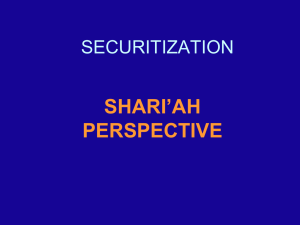Changed Nature of Intl Security, Human Securit
advertisement
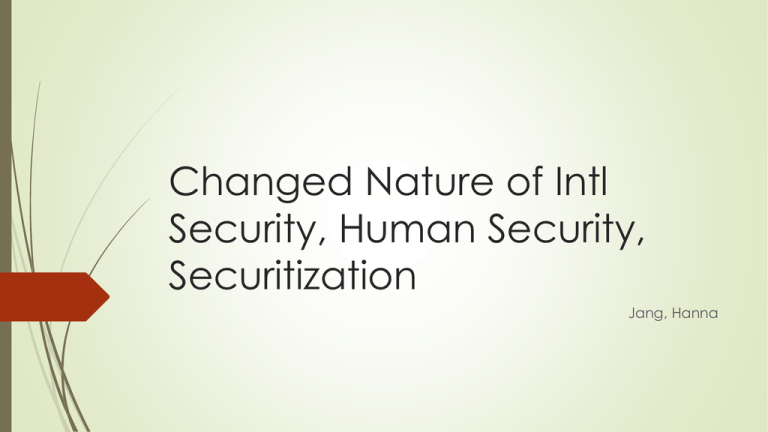
Changed Nature of Intl Security, Human Security, Securitization Jang, Hanna How useful is the concept of Human Security? Can it be an alternative way of studying security to traditional security studies emphasizing military capabilities at national level? Content Traditional concept of Security Changes of the Concept Debates about the Concept The Copenhagen School Concept of Human Security Conclusion Traditional concept of Security State centered concept Military capabilities to protect national security Military conflict as the defining key to security Military security concerns the two-level interplay of the armed offensive and defensive capabilities of states, and states’ perceptions of each other’s intentions. Changes of the concept After the WWⅡ, the need for collective action to protect freedom and dignity of individuals. Idea of economic security arose in part from reaction to the increasing liberalization of the world economy. In the case of the environment, the securitization process can be traced back to the 1960s, when books such as Carsen’s Silent Spring first began to make people seriously aware that the growing impact of humankind was transforming the natural environment. During the cold war, a nuclear arms race intensified a military focus. Changes of the concept When the Cold War was over, economic, social, and environmental issues showed up in international security agenda. Since the mid-1990s the concept of human security has become widely used. Debates about the concept security -Traditionalists vs. Wideners Traditionalists The risk of intellectual incoherence. Stephen Walt: Security Studies is about the phenomenon of war, and the study of the threat, use, and control of military force. Wideners Nature of security is changing. Security in 21th century involves economic, environmental , and social issues as much as military issues. The Copenhagen School It comes down on the side of the wideners in terms of keeping the security agenda open to many different types of threat. Theorists associated with the school include Barry Buzan, Ole Waever and so on. The prominent concept of the Copenhagen school is securitization developed by Ole Waever. Their theory of securitization aims at explaining how issues became securitized. When security is more harm than good, they prefer desecuritiazation. The Copenhagen School A key aspect of the securitization ideas is to be aware of the arbitrary nature of threat, to simulate the thought that the foundation of any national security policy is not given by nature but chosen by politicians. The framework of the school links to existing actors; tries to understand their modus operandi and assumes that future management f security will have to include a handling of these actors. Concept of Human Security Human development report argues that that insuring "freedom from want" and "freedom from fear" for all persons is the best path to tackle the problem of global insecurity. There is no single consensus definition of human security. Broad formulation: Encompasses all forms of threats from all sources. Includes all threats and vulnerabilities to human freedom and dignity including threats of hunger, disease, natural disasters, economic downturns, political repression. Narrow formulation: Focuses on threats of violence particularly organized political violence. Emphasizes the more immediate necessity for intervention capability rather than longterm strategic planning and investing for sustainable and secure development. (Liotta and Owen, 2006) Concept of Human Security Its practical usefulness? Human security debates have continued to raise questions from delegations about the role of the state and the potential conflict with sovereignty. Despite the controversy, the core normative principles of the human security concept became the UN’s key polity documents on Post Cold-War common global security agendas. The Barcelona Group proposed human security as a doctrine form European security policy. Japan and Canada each embedded human security within its foreign security. It can be useful fro social, economic and environmental themes in focusing on the downside risks. Critiques: lack of the analytical and descriptive power of theoretical construct to identify causal relationship, define appropriate responses. It is too broad concept to use as a policy tool. Conclusion How useful? an alternative to traditional security studies?
